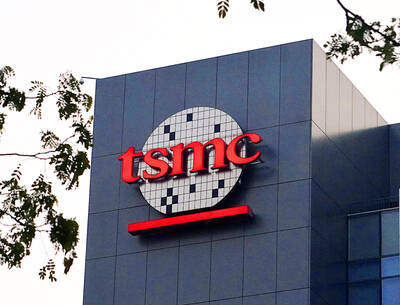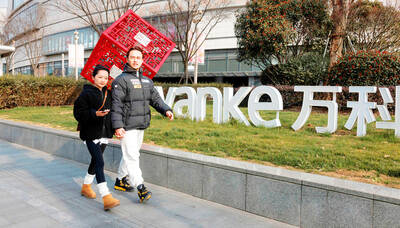Taiwan's demand for gold during the second quarter of this year increased 19 percent compared to a year earlier, according to the latest report released by the World Gold Council (WGC).
The encouraging second-quarter figures for consumer demand follow a 12 percent increase in consumer demand in the previous quarter, the report said.
World consumer demand for gold in the second quarter rose by 11 percent in tonnage terms and 25 percent in dollar terms when compared the same period of last year, according to the report.
"The fact that consumer demand is up, for the second successive quarter, is good news for the gold industry," the council's chief executive James Burton said about the figures on its Web site.
Taiwan's gold demand for jewelry between April and June amounted to 4.5 metric tonnes, up 19 percent from a year earlier, it said, adding that the lack of SARS outbreaks and strong promotions by gold dealers in May for Mother's Day stimulated local consumer demand.
The WGC also said that the rapid economic growth, stable price index and the public's continuous concern over economic and political prospects have led to the increase in demand for gold.
Although gold prices rose 13 percent, world gold demand for jewelry use still increased 8 percent, or 664 metric tonnes, in the second quarter compared with the year-earlier level.

CHIP RACE: Three years of overbroad export controls drove foreign competitors to pursue their own AI chips, and ‘cost US taxpayers billions of dollars,’ Nvidia said China has figured out the US strategy for allowing it to buy Nvidia Corp’s H200s and is rejecting the artificial intelligence (AI) chip in favor of domestically developed semiconductors, White House AI adviser David Sacks said, citing news reports. US President Donald Trump on Monday said that he would allow shipments of Nvidia’s H200 chips to China, part of an administration effort backed by Sacks to challenge Chinese tech champions such as Huawei Technologies Co (華為) by bringing US competition to their home market. On Friday, Sacks signaled that he was uncertain about whether that approach would work. “They’re rejecting our chips,” Sacks

Taiwan’s long-term economic competitiveness will hinge not only on national champions like Taiwan Semiconductor Manufacturing Co. (TSMC, 台積電) but also on the widespread adoption of artificial intelligence (AI) and other emerging technologies, a US-based scholar has said. At a lecture in Taipei on Tuesday, Jeffrey Ding, assistant professor of political science at the George Washington University and author of "Technology and the Rise of Great Powers," argued that historical experience shows that general-purpose technologies (GPTs) — such as electricity, computers and now AI — shape long-term economic advantages through their diffusion across the broader economy. "What really matters is not who pioneers

BUBBLE? Only a handful of companies are seeing rapid revenue growth and higher valuations, and it is not enough to call the AI trend a transformation, an analyst said Artificial intelligence (AI) is entering a more challenging phase next year as companies move beyond experimentation and begin demanding clear financial returns from a technology that has delivered big gains to only a small group of early adopters, PricewaterhouseCoopers (PwC) Taiwan said yesterday. Most organizations have been able to justify AI investments through cost recovery or modest efficiency gains, but few have achieved meaningful revenue growth or long-term competitive advantage, the consultancy said in its 2026 AI Business Predictions report. This growing performance gap is forcing executives to reconsider how AI is deployed across their organizations, it said. “Many companies

China Vanke Co (萬科), China’s last major developer to have so far avoided default amid an unprecedented property crisis, has been left with little time to keep debt failure at bay after creditors spurned its proposal to push back a looming bond payment. Once China’s biggest homebuilder by sales, Vanke failed to obtain sufficient support for its plan to delay paying the 2 billion yuan (US$283.51 million) note due today, a filing to the National Association of Financial Market Institutional Investors showed late on Saturday. The proposal, along with two others on the ballot, would have allowed a one-year extension. All three